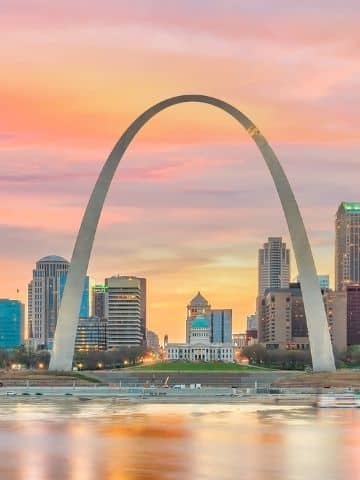
National Parks in Missouri: Explore the 7 Missouri National Parks (2022 Update)
- Jennifer Melroy
- Last Modified January 3, 2022
- First Published on October 2, 2021
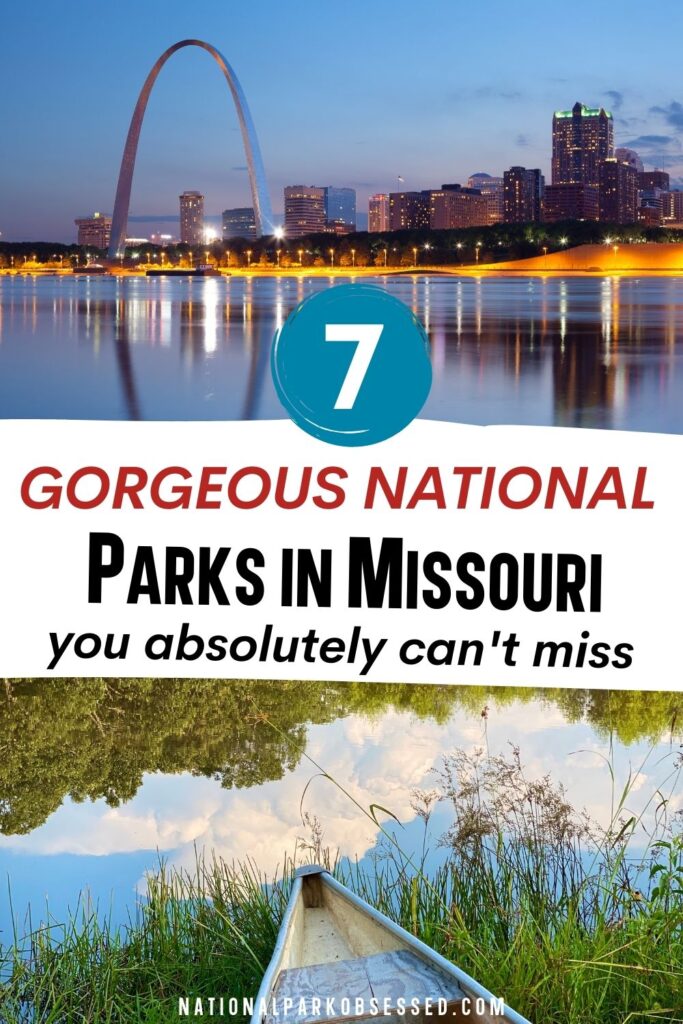
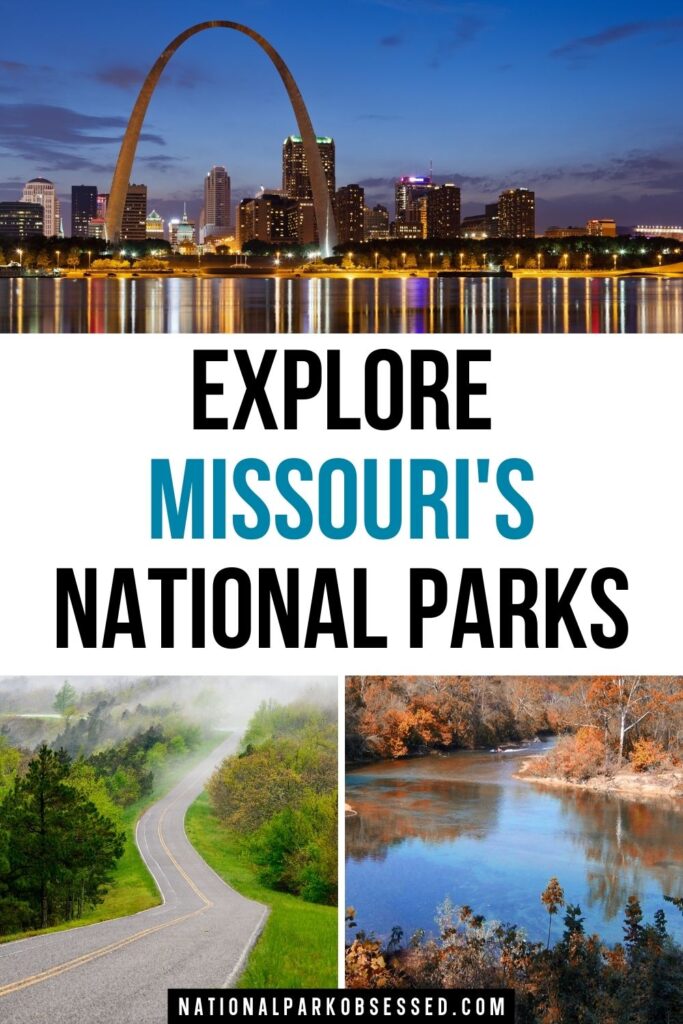
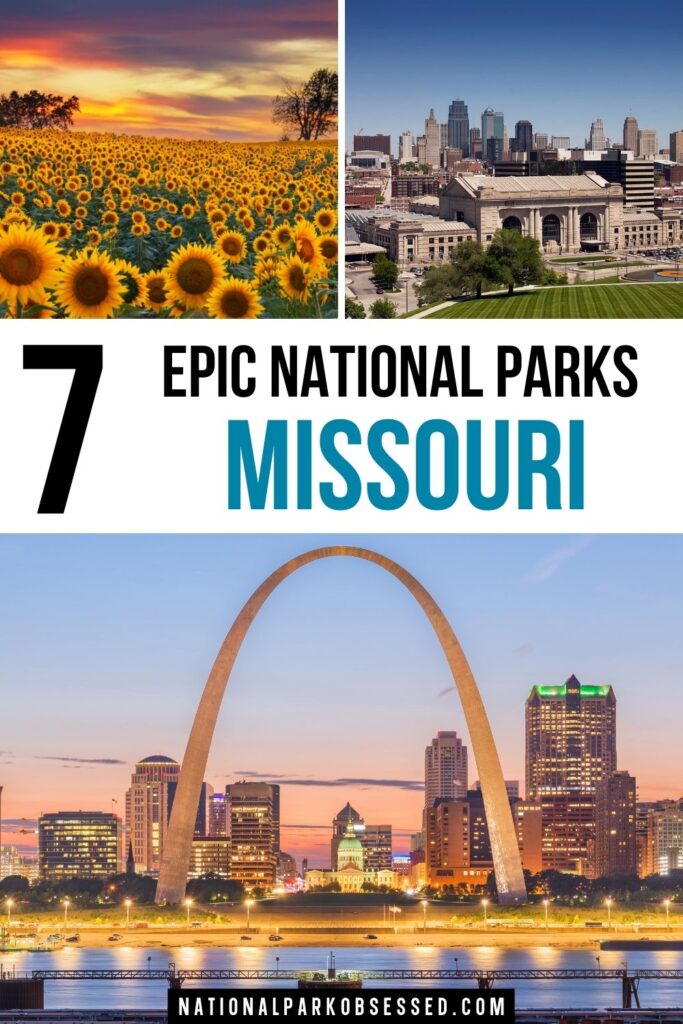

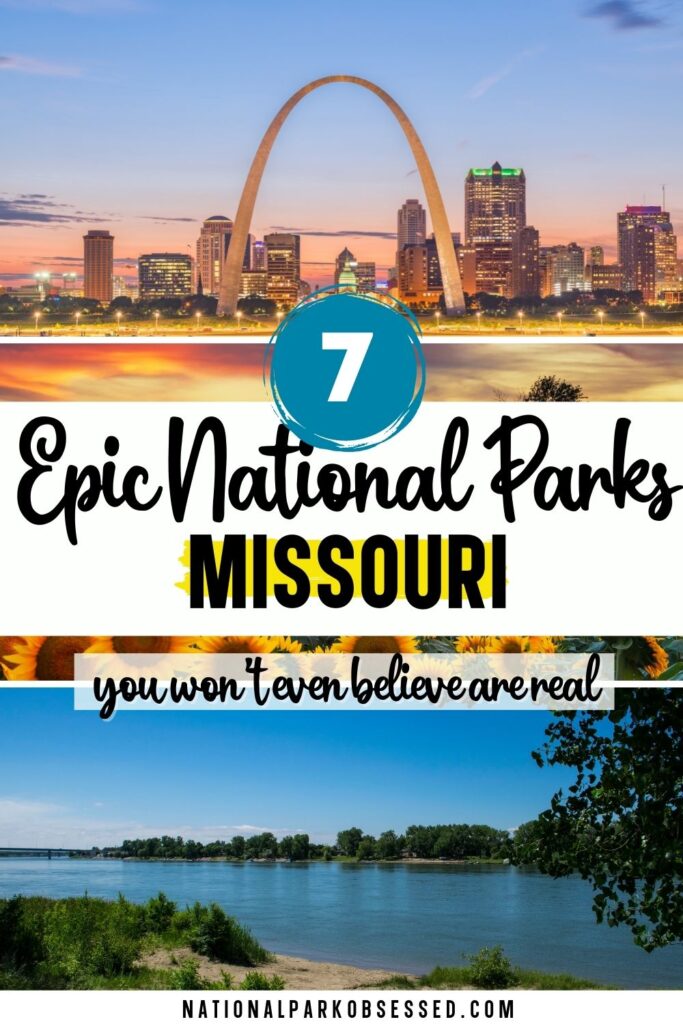
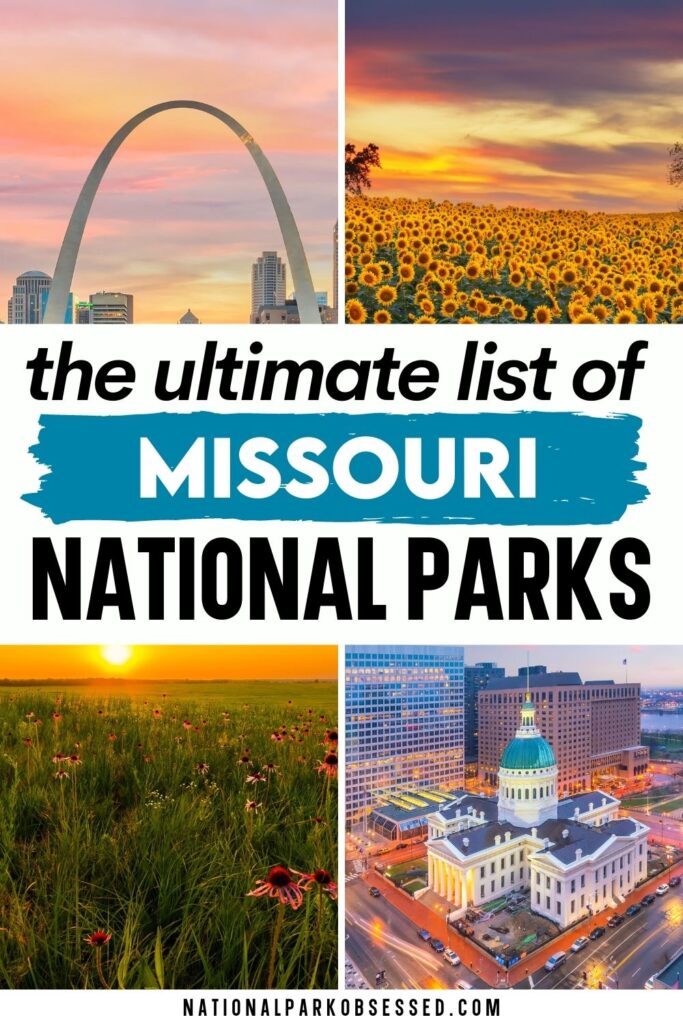

Post summary: National Parks in Missouri
Missouri is the land of prairies, rolling hills, caves, and scenic trails. This state is known for so many things. Nicknamed as the Cave State, the Mother of the West, and the Show-Me State, show them they did! Missouri can boast so many sites of unique and picturesque natural wonders and amazing destinations.
Two prominent waterways are present in the area, the Mississippi River and the Missouri River. This attracted many people throughout the centuries to use this as a pathway for goods, transportation, and emigration. Through this, the Midwestern state is the site of many prominent historical and cultural events and the home of many prominent people throughout America’s history.
Explore the wealth of natural, historic, and cultural destinations here in this Midwestern State. From winding rivers, hundreds of caves, horseback riding for parcels, the home of a previous president, or even recreational activities, Missouri has something for everyone.
In this article, we will explore the 7 National Parks in Missouri. We will provide a brief overview of the park, things to do in the Missouri National Parks, and provide a map of the National Parks of Missouri.
This post may contain affiliate links, meaning if you book or buy something through one of these links, I may earn a small commission at no extra cost to you! Read the full disclosure policy here

Map of National Parks in Missouri
Missouri National Parks
Gateway Arch National Park
Gateway Arch National Park is located in St. Louis, Missouri. This park commemorates three different historic events through its memorial. The events are the Louisiana Purchase that led to several exploration expeditions of the Americas, the first civil government and, the debate over slavery raised by the Dred Scott case.
This park features one of the most defining structures of St. Louis, the Gateway Arch. Known also as the Gateway to the West, this arch marks the relevance of St. Louis to the early expeditions in the 19th century. This steel catenary arch stands tall at over 630 feet and is the tallest structure in Missouri. Visitors can opt to ride the unique tram service to the observation room at the top of the arch. The park also includes the surrounding land of the arch, the old courthouse, and the Museum at the Gateway Arch. These different features aim to educate about these historical landmarks and how their stories shape the state today.
The area was only designated a national park in 2018.
Things to do: Guided Tours, Self-guided Tours
How to get there: Gateway Arch National Park is located on the Mississippi River in the center of downtown St. Louis. Near the park, Interstate Routes 44, 55, 64, and 70 converge.
Where to Stay: Overnight stay is unavailable in Gateway Arch, but lodging can be found in St. Louis.
Entrance Fee: $3 per person or free with an America the Beautiful Pass.
Official Website: Click Here
Map: Download
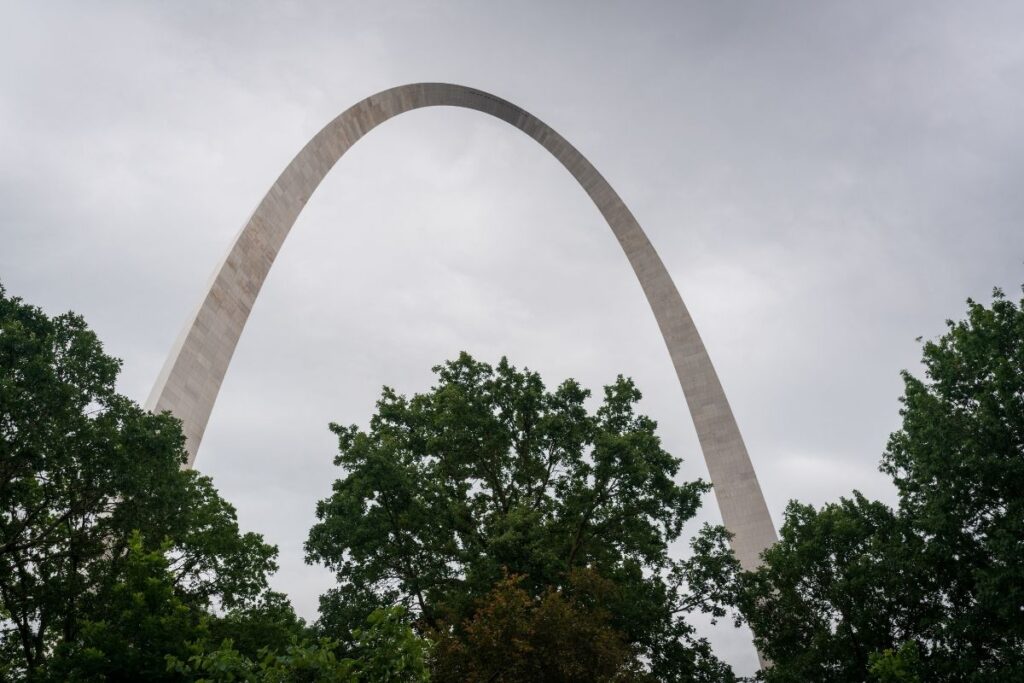
George Washington Carver National Monument
George Washington Carver National Monument remembers the life and boyhood of the great agricultural scientist, George Washington Carver. This is one of the first national monuments created to celebrate the life of an African American and the first ever to remember a non-president and for good reason. Carver was a great inspiration to many and his contributions to science forever changed the economic landscape of America.
Carver was one of the most prominent African American scientists in the 20th century. Some of his major contributions were to promote alternative crops to cotton and find innovative ways to prevent soil depletion. Apart from this, he was one of the first scientists to promote environmentalism. Nicknamed the “Black Leonardo”, Carver was able to attain many achievements throughout his lifetime.
The monument itself preserves the Carver Home and the Carver cemetery. This 240-acre land features many hills, woodlands, and prairies for visitors to explore and learn more about the life that led to the success of this celebrated scientist.
This monument was commissioned by President Franklin Delano Roosevelt on July 14, 1943, who dedicated 30,000 USD for its construction and preservation.
Things to do: Guided Tours, Self-guided tours
How to get there: Travelers can drive I-44 to reach Carver Road. The park entrance is 34 miles south of this road.
Where to Stay: George Washington Monument doesn’t offer lodging. The nearest city that has hotels or other options is Diamond City.
Entrance Fee: Free
Official Website: Click Here
Map: Download
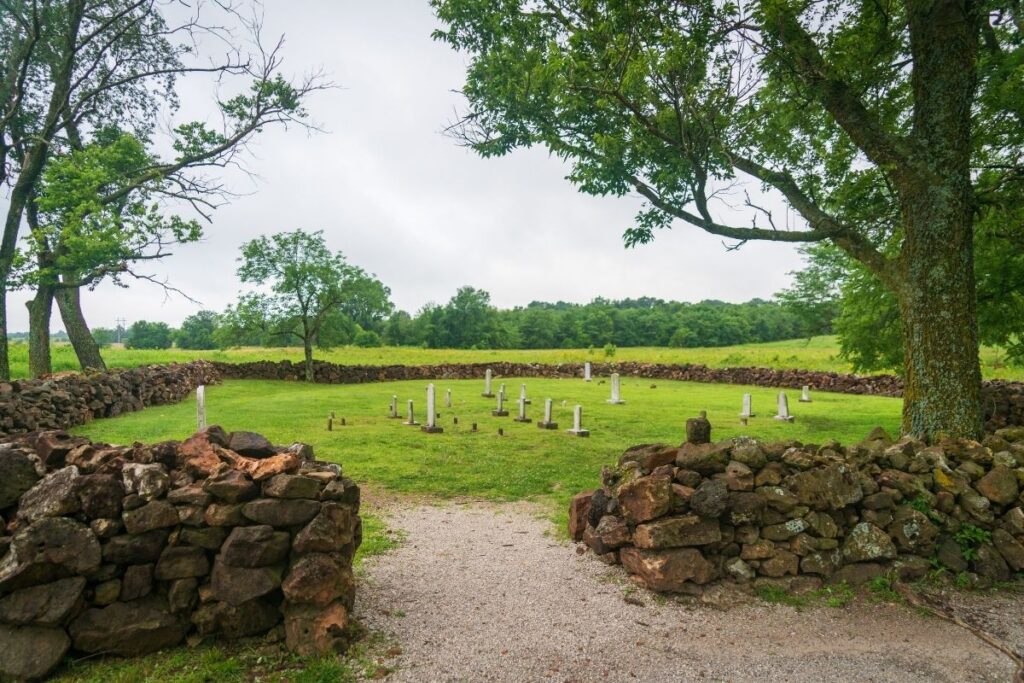
Harry S Truman National Historic Site
Harry S Truman National Historic Site remembers and celebrates the life of the thirty-third president of the United States. This site features the Truman Home, the Truman Farm House, and other family homes in the area.
The two key features of the site are the Truman Home and The Truman Farm House. When visiting the Truman Home in Independence, expect to see a white two-story home that offers a glimpse of the simple life Truman lived before being elected President of the United States. He is one of the few presidents that did not own his home before becoming president. Instead, he lived in the family’s estate until being elected Senate and renting properties in Washington. Despite this, he really did create a home here with his wife, Bess Wallace. After he retired, he made it into a personal office and he spent most of his time here until he died. His wife and daughter lived here also until their respective deaths, preserving the life and ancestral home of the Truman family.
The Truman Farm House in Grandview was owned by Truman’s maternal grandmother and where he worked the farm in his boyhood and young life.
The site was named a National Historic Site on May 23, 1983.
Things to do: Guided Tour, Self-guided tours
How to get there: The Visitor Center is housed in Historic Fire Station No. 1 at the intersection of Truman Road and Main Street. The closest airport is Kansas City International.
Where to Stay: There is no accommodation in the site itself, but visitors can go to the neighboring cities of Independence and Grandview to stay overnight.
Entrance Fee: Free
Official Website: Click Here
Map: Download
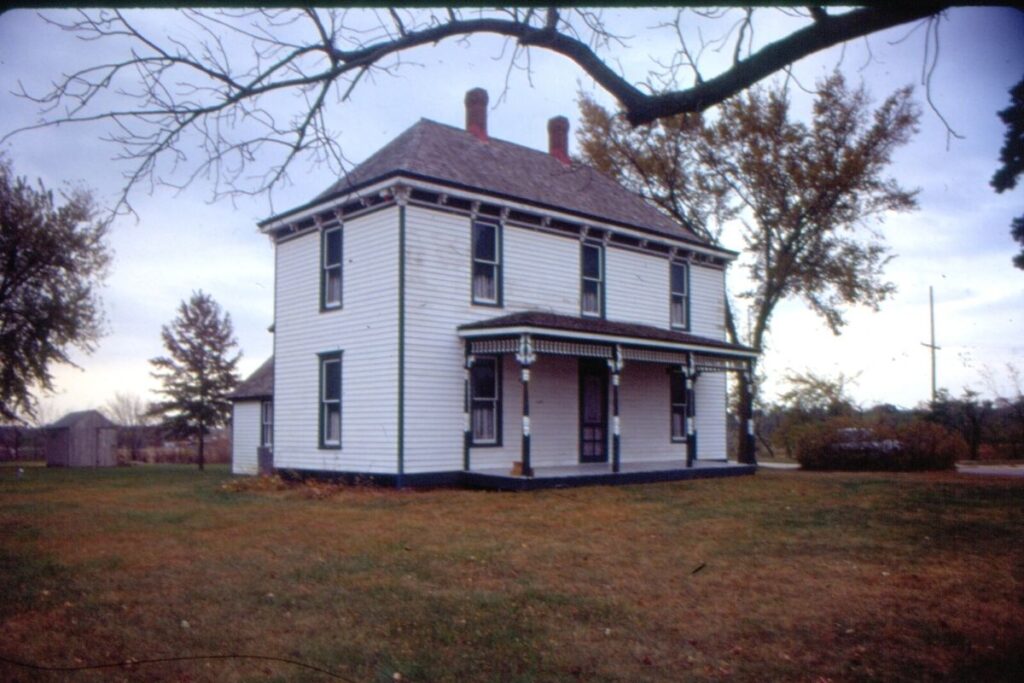
Ozark National Scenic Riverways
The Ozark National Scenic Riverways is the first-ever national park that protects a river system and for good reason! This park was created to protect 134 miles of the Current and Jacks Fork Rivers. Imagine crystal clear waters surrounded by lush green oak-pine forests. That’s exactly what you would get when visiting this recreation area.
These two rivers are the perfect destination for visitors to enjoy whitewater activities like johnboats, canoeing, swimming, fishing, tubing, hiking, and bird watching. There are also great opportunities for hunting around the area for wildlife enthusiasts.
The Ozarks of Missouri is actually known for dolomite that led to many sinkholes, caves, and springs. There are actually over three hundred caves that have already been recorded within the boundaries of the Ozarks and many springs. This area is a great environment for different wildlife to thrive and make a home. There are about four hundred different species of animals living in or spotted in the area and over a thousand types of flora that can be discovered by exploring the trails in the park.
The park was created by an Act of Congress in 1964 to protect the Current and Jacks Fork rivers, and it was formally dedicated in 1971.
Things to do: Fishing, Hunting, Camping, Horseback Riding, Hiking
How to get there: Saint Louis, Memphis, and Springfield, Missouri are the closest commercial airports. Drivers has the option of either Interstate 44 or US Route 60 to reach the park.
Where to Stay: There is a range of overnight options available in the park. While Big Spring’s housing is now closed for repairs, adjacent settlements provide cabins, hotels, and Bed and Breakfasts.
Entrance Fee: Free
Official Website: Click Here
Map: Download
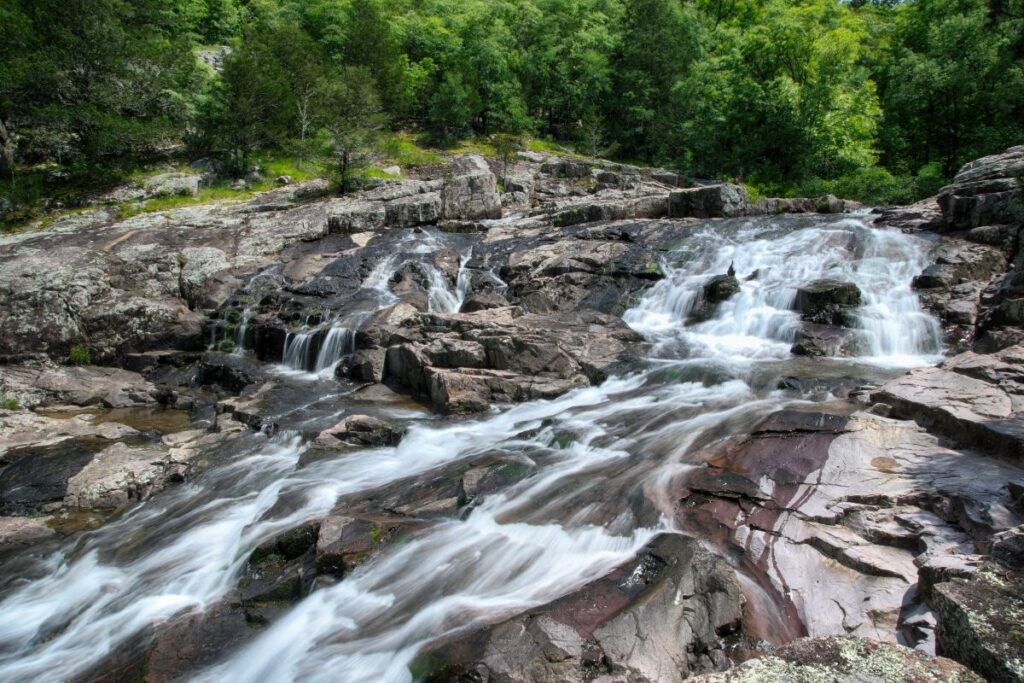
Ste. Genevieve National Historical Park
Ste. Genevieve National Historical Park is a historic district in Ste. Genevieve, Missouri. The historic town sitis along the Mississippi River and was the captiol of Spanish and French Louisiana during the colonial period. The town still has many French colonial architecture including Beauvais-Amoureux House, the Felix Vallé House State Historic Site, La Maison de Guibourd, the Delassus-Kern House, the Louis Bolduc House.
Ste. Genevieve National Historical Park is one of the newest national park and is still being developed for visitors so right now guided tours are being offered but not all buildings are open to the public.
The park was officially added to the National Park System on October 30, 2020.
Things to do: Walking tours, Guided Tours
How to get there: Ste. Geneviè take Interstate 55 to exit 154. Follow US-61.
Where to Stay: There are several lodging option in the town of Ste. Geneviève.
Entrance Fee: Free
Official Website: Click Here
Map: Download
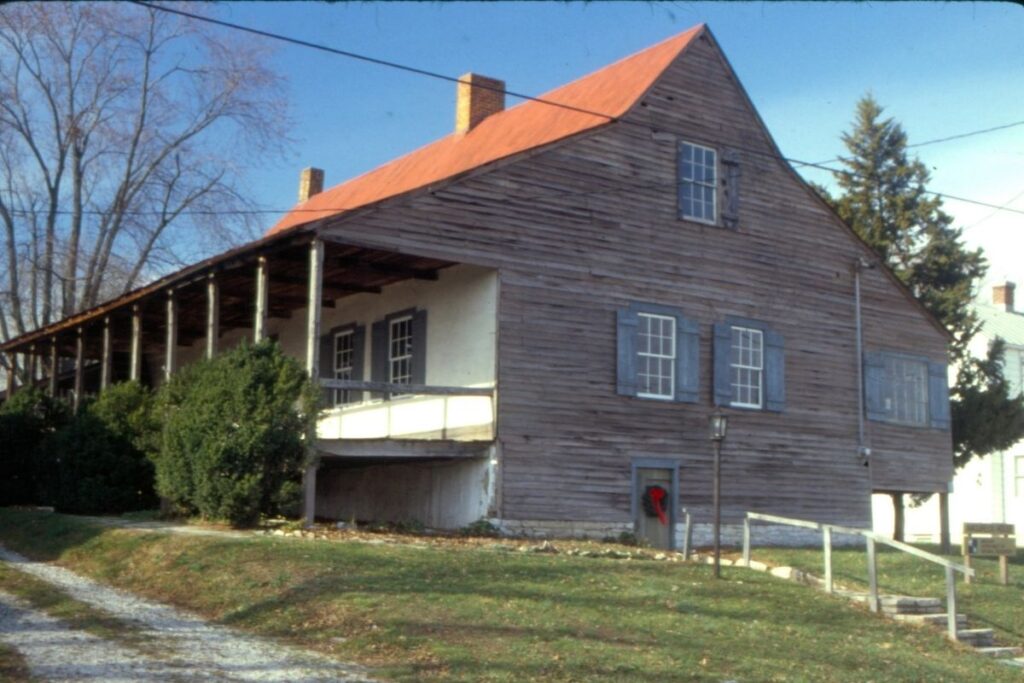
Ulysses S. Grant National Historic Site
Ulysses S. Grant National Historic Site remembers the life, military career, and presidency of Ulysses S. Grant. Also known as the White Haven, this was the family home of Grant where he and his wife, Julia Grant lived. After being separated from his wife and family during his military career, he decided to come back to White Haven permanently.
Here, he created an 850-acre plantation where many African-American slaves worked and tended the farm. This can be a surprise for many learning about White Haven given the large contributions of Grant in abolishing slavery through the American Civil War and supporting the Union. It is believed that these slavery experiences with people so close to him are a contributor to what drove him to fight for unified freedom. He aspired to free his slaves as soon as he can, which eventually he was able to free at least one of his men, William Jones.
Today, visitors can learn more about the life, struggle, family, farming, and even slavery that happened here in White Haven. Through that, you can learn so much more about this U.S. president.
This area was officially designated under the care of the National Park Service in 1989.
Things to do: Guided Tours, Visit Museums
How to get there: Most major airlines and numerous minor carriers fly into Lambert International Airport in St. Louis. By car, take Gravois Road – Hwy 30 toward St. Louis.
Where to Stay: There is no accommodation on the site, but tourists can go to Grantwood Village in the neighboring city.
Entrance Fee: Free
Official Website: Click Here
Map: Download
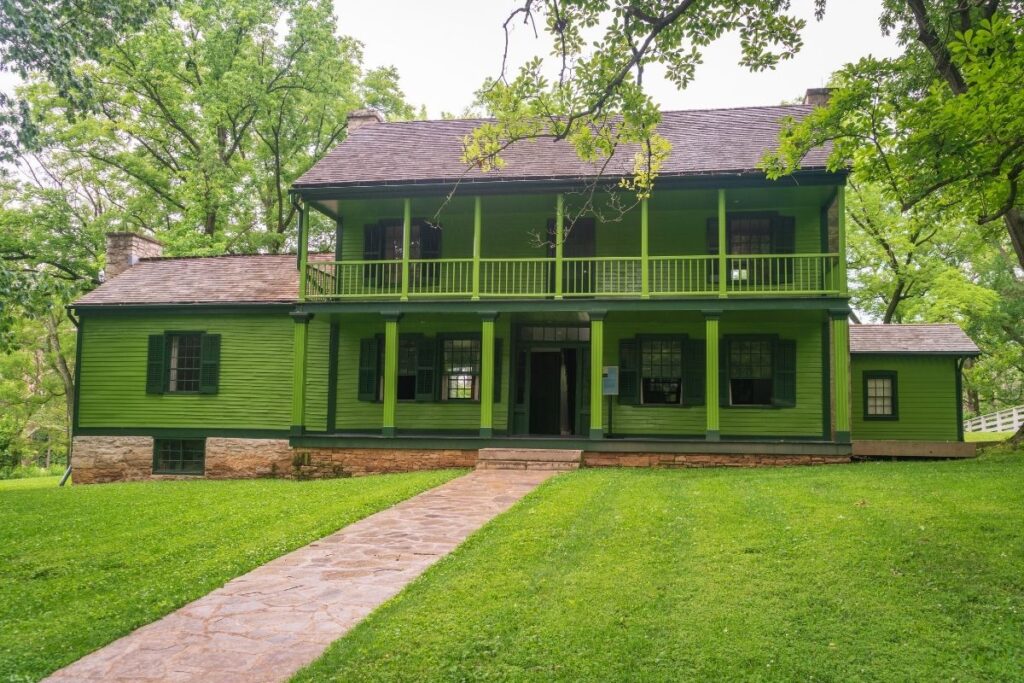
Wilson’s Creek National Battlefield
Wilson’s Creek National Battlefield preserves the exact site of a prominent battle during the American Civil War. The Battle of Wilson Creek was fought here on August 10, 1861, which was the first of many engagements for control over the state. This national park consists of an automobile tour loop, the 1852 Ray House, and “Bloody Hill,” the site of the actual battle.
The Battle of Wilson Creek was one of the first major violent engagements that occurred west of the Mississippi River. On August 10, Union forces led by Nathaniel Lyon moved aggressively against the confederate camp settled along the banks of Wilson Creek. Unfortunately, Lyon was killed during this battle and Union forces had to retreat from the field. It led to many battles for control over the Missouri territory where the Confederate eventually lost any chance of overtaking the state.
Wilson’s Creek National Battlefield has been a unit of the National Park Service since 1960.
Things to do: Guided Tours, Self-guided tours, Hiking, Horseback Riding
How to get there: The Springfield/Branson Regional Airport serves Springfield. Springfield offers limousine, taxi, and Uber services. The Greyhound bus line also stops in Springfield.
Where to Stay: Wilson’s Creek does not have any overnight accommodations, but guests can look for hotels, inns, and motels in Republic City.
Entrance Fee: $20 per vehicle or free with an America the Beautiful Pass.
Official Website: Click Here
Map: Download
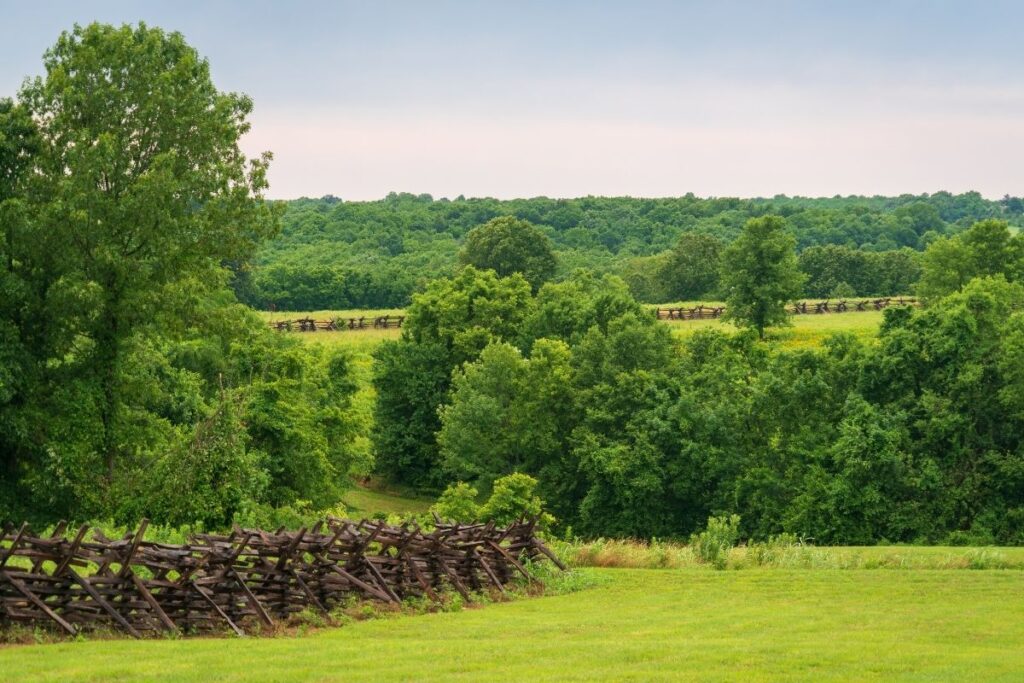
Affiliate Sites of Missouri
California National Historic Trail
The California National Historic Trail preserves the five thousand-mile trail that was used for the largest migration in American history. This trail stretches across ten different states including Missouri, wherein hundreds of thousands of emigrants decided to leave their rural life in search of good fortune in California.
California was largely abandoned by many settlers in the Americas because of its secluded nature. The only way to reach this once remote area was to travel by sea. The first group to ever travel here and started the great emigration was from Missouri. This brave journey was definitely not easy. Many were left hungry, sick, and naked. But this group persevered. After reaching California, they made it possible for more groups to follow suit. When news hit about the California Gold Rush, emigration ramped up even more.
Travelers can now have a glimpse of this experience by hiking the same trail to California. Despite most of the trails being privately owned, visitors can still experience this great phenomenon in some trail segments that are open for hiking and other recreational activities.
Things to do: Scenic Drives, Hiking, Horseback Riding
How to get there: California Trail has implemented a family of road markers to assist travelers in locating original routes, trail crossings, and local sites. Follow the signs that include the California National Historic Trail’s distinctive logo.
Where to Stay: California National Trail covers ten different states, where there are many hotels, inns, campgrounds, and motels to choose from.
Entrance Fee: Free but various attractions along the trail may charge an entrance fee.
Official Website: Click Here
Map: Download
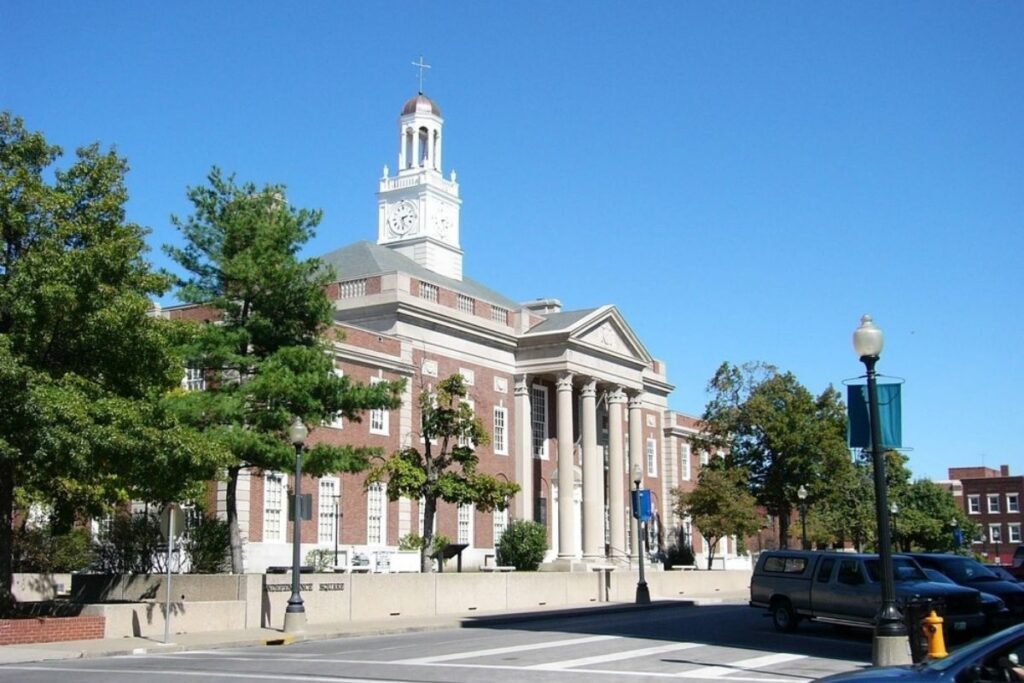
Lewis and Clark National Historic Trail
The Lewis and Clark National Historic Trail connect sixteen states through history. After the Louisiana Purchase, President Thomas Jefferson commissioned the Lewis and Clark expedition through the sixteen present-day states of Pennsylvania, Ohio, West Virginia, Kentucky, Indiana, Illinois, Oregon, Kansas, Nebraska, Iowa, South Dakota, North Dakota, Montana, Idaho, Washington, and of course, Missouri.
This historical exploration was used to assert the power of Americans over the newly purchased land. President Thomas Jefferson was able to acquire this land from the Kingdom of France for fifteen million dollars. Through the exploration, they were also able to explore the wealth of wildlife and natural resources these sixteen states have. Today, hikers can start their own exploration along the trail and visit the different landmarks and notable stops throughout.
The explorers from the Lewis and Clark expedition followed the route of the Missouri River. Today, visitors of the state can also enjoy different landmarks along the same trail. In Missouri River county, there are the Fort Union National Historic Site and Fort Peck, among other exciting destinations.
The trail was completed as the Lewis and Clark National Historic Trail in 2019.
Things to do: Hiking, Boating, Nature Sightseeing
How to get there: From Pennsylvania to the Pacific Coast, the Lewis and Clark National Historic Trail spans 4,900 miles, passes through 16 states, and contains more than 100 sites. In Missouri, some of the most relevant areas are in St. Louis.
Where to Stay: Tourists can stay in a variety of places along this trail. In Missouri, visitors can find many options in St. Louis.
Entrance Fee: Free but various attractions along the trail may charge an entrance fee.
Official Website: Click Here
Map: Download
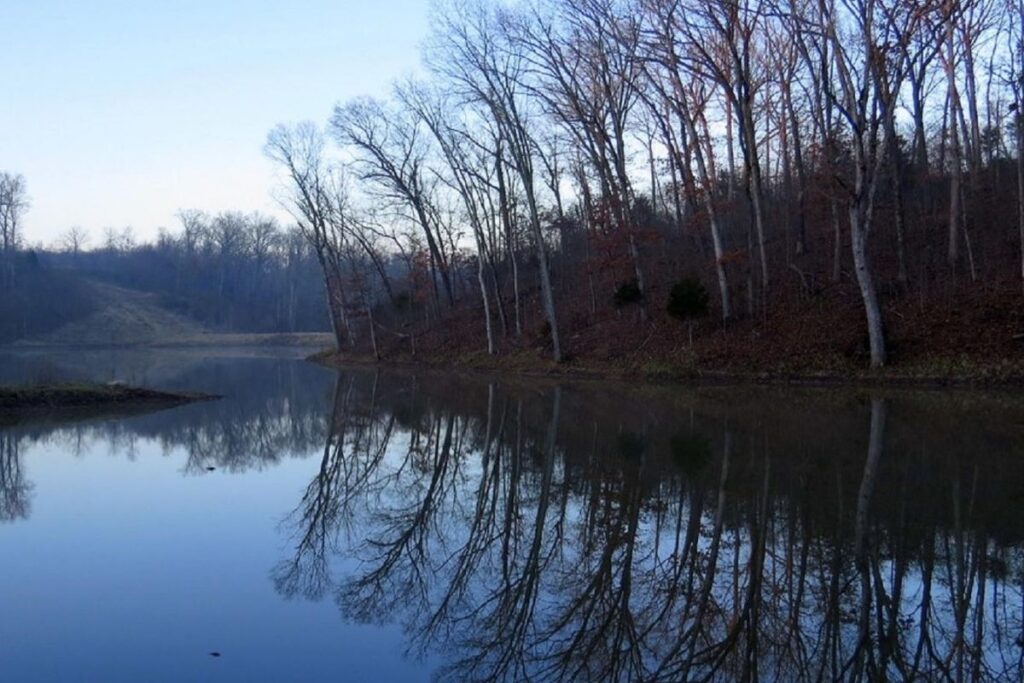
Oregon National Historic Trail
The Oregon National Historic Trail connects seven states, Kansas, Nebraska, Wyoming, Idaho, Washington, Oregon, and Missouri. The trail is about 2170 miles long and goes through picturesque views of the different states, has a wealth of history to learn, and many recreation opportunities. This is no longer one complete trail. Instead, segments of the original route are left open for hiking and other activities.
The Oregon National Historic Trail preserves the trade industry that was prominent in the 1800s in America. One of the most prominent businesses of those days, the route was instrumental for people to create a living trading fur, cattle, and other goods. Aside from the trading history of this area, the trail was also used during the Lewis and Clark Expedition, Mormons during their emigration, and the California Gold Rush.
Today, travelers can go through the trail state by state and enjoy what each stop has to offer. In Missouri, there are about 17 sites for travelers to come and explore. A few of these sites include the Raytown Historical Society Museum and Wayne City Landing.
Things to do: Biking, Hiking, Auto-Touring
How to get there: There are 17 different sites in Missouri. The largest airports in Missouri are the Kansas City International Airport, Springfield–Branson National Airport, and St. Louis Lambert International Airport.
Where to Stay: Along this trail, tourists can stay in a variety of locations. In Missouri, there are many options for accommodation in Independence, Wayne City, and in Kansas City.
Entrance Fee: Free but various attractions along the trail may charge an entrance fee.
Official Website: Click Here
Map: Download
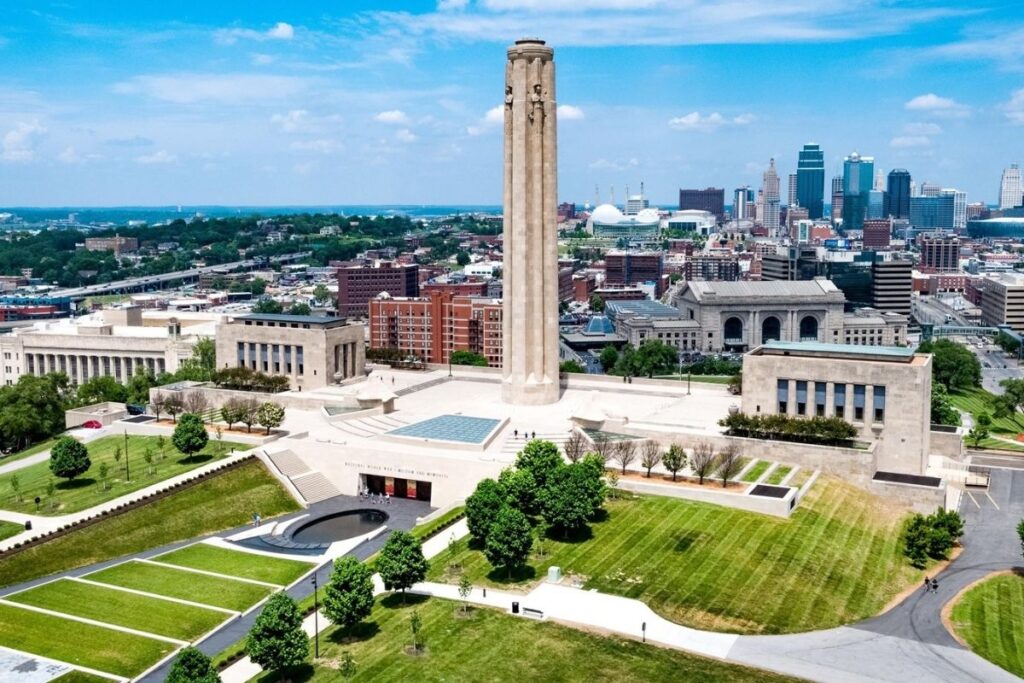
Pony Express National Historic Trail
The Pony Express National Historic Trail preserves and remembers a great business back in the Old West. This route was taken by the first-ever speedy mail service in America. With the rising popularity of delivering letters and mail due to the economic boom of the time, people needed their mail faster than ever before. By riding horseback from Missouri to California, people can now expect their delivery within ten days. This 1800-mile long trail changed delivery expectations forever.
The Pony Express service was able to connect the East to the West through this service. While only being operational for eighteen months, they sent a signal of the dire need for this service to Congress. Eventually, Congress was able to expedite a transcontinental pathway for these parcels. Pony Express definitely revolutionized mail delivery at the time!
Visitors can now go to the Pony Express Museum in St. Joseph, Missouri to travel back in time and learn about the Old West or even try horseback riding in these areas.
Things to do: Horseback Riding, Ranger Program
How to get there: The nearest airport to Saint Joseph is Kansas City Airport for visitors to fly to.
Where to Stay: Visitors can find a lot of accomodation options in St. Joseph, Missouri.
Entrance Fee: Free but various attractions along the trail may charge an entrance fee.
Official Website: Click Here
Map: Download

Santa Fe National Historic Trail
Known as the Great Prairie Highway, the Santa Fe National Historic Trail preserves is an important trail that connects five states from Missouri to New Mexico during the 1800s. This was created to make trading possible in the Americas at the time.
With over 1200 miles stretching across these states, it is one of the most prominent trading routes of America. Spearheaded by William Becknel, this route became the hub for the trading industry in the 1800s. Realizing the value of the trail, a Native American tribe, the Comanche started collecting a fee to grant passage for the trail. Refusal to pay this fee caused major disruptions to the migration of wildlife in the area. Bison, the main trade of the Comanche, became less popular and harder to trade which contributed to the decline of the Comanche power.
The trail has also been prominent during the American Civil War and even the Mexican-American War. Today, visitors have many opportunities for recreation and history lessons along the trail. The trail follows the Missouri River and begins in Independence then stretches to New Mexico.
Things to do: Nature Sightseeing, Museums, Hiking
How to get there: Travelers can fly into a variety of airports to get to the route, including Kansas City, Jefferson City, and St. Louis. The majority of trail sites are accessible by vehicle, bicycle, or foot.
Where to Stay: There are a total of 32 sites to visit along and around the trail. Visitors can opt to find accommodation in nearby cities of each destination
Entrance Fee: Free but various attractions along the trail may charge an entrance fee.
Official Website: Click Here
Map: Download
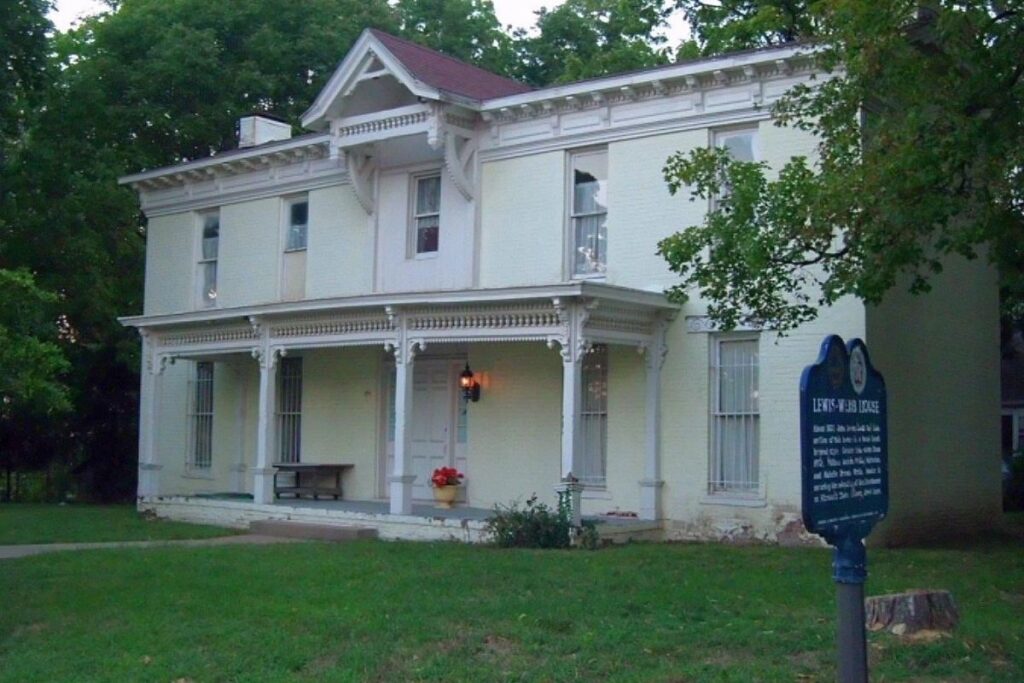
Trail of Tears National Historic Trail
The Trail of Tears National Historic Trail commemorates a devastating moment of America’s history. A human rights violation and atrocity happened as the American troops enacted legislature by Congress, the Indian Removal Act. It was passed in 1830 and it led to the exile of the Cherokee People due to the Treaty of New Echota, forcing them out of their homes and walking through this route to reach the new reservation in present-day Oklahoma.
This trail carries many memories of hardship for the Cherokee people. Their removal process began in May of 1838 and more than 16,000 Cherokee people were forced to walk to the pathway to reach the new settlement in Oklahoma. Unfortunately, not everyone was able to survive. Thousands of lives were lost during the journey. The tragic reality and harsh environments rendered many of the Cherokee people hungry, lost, or dead. Most of the lives lost were the young, the old, and the disabled. Despite these tragic events, the Cherokee people prove their resilience and finally reached a new settlement. There, they were able to adjust and create a thriving community for them to enjoy and become truly independent.
Visitors can now enjoy scenic views and a wealth of wildlife when leisurely pacing this pathway. It is also now known for many opportunities for recreation and beautiful landmarks. However, let us not forget the true events that occurred in this pathway.
Things to do: Hiking, Guided Tours, Ranger Program
How to get there: Travelers can fly into a variety of airports to get to the route, including Kansas City, Jefferson City, and St. Louis. The majority of trail sites are accessible by automobile. Some of the locations are located along dirt roads or river corridors.
Where to Stay: There are 4 sites to visit in Missouri. Travelers can find lodging in nearby cities like in Springfield, Waynesville, Pilot Knob, or Maramec.
Entrance Fee: Free but various attractions along the trail may charge an entrance fee.
Official Website: Click Here
Map: Download

List of National Parks in Missouri
There are 7 National Parks in Missouri and they received 2.1 million visitors in 2020 and generated over XXX million in tourism economic benefits. The majority of visitors (1.3 million and 486,000) visited Ozark National Scenic Riverways and Gateway Arch National Park.
- Gateway Arch
National Park(a future National Memorial) - George Washington Carver National Monument
- Harry S Truman National Historic Site
- Ozark National Scenic Riverways
- Ste. Genevieve National Historical Park
- Ulysses S. Grant National Historic Site
- Wilson’s Creek National Battlefield
Affiliated Areas
- California National Historic Trail (CA, CO, ID, KS, MO, NE, NV, OR, UT, WY)
- Lewis and Clark National Historic Trail (IA, ID, IL, IN, KS, KY, MO, MT, NE, ND, OH, OR, PA, SD, WA, WV)
- Oregon National Historic Trail (ID, KS, MO, NE, OR, WA, WY)
- Pony Express National Historic Trail (CA, CO, KS, MO, NE, NV, UT, WY)
- Santa Fe National Historic Trail (CO, KS, MO, NM, OK)
- Trail of Tears National Historic Trail (AL, AR, GA, IL, KY, MO, NC, OK, TN)
Missouri National Parks also provides support and management to 1 New Heritage Area as well as 2,403 National Register of Historic Places Listings.
There are 36 National Historic Landmarks, 16 National Natural Landmarks, 1,459 Places recorded by the Heritage Documentation Program, and over 2.36 million objects in the Missouri National Parks Museum Collections. There are 552 Archaeological Sites in the Missouri National Parks.
Missouri is home to 92 State Parks.
Frequently Asked Questions about Missouri National Parks
How many National Parks are in Missouri?
Missouri has 7 National Park Service sites and 1 site holding the designation “National Park.” Its 7 National Park Service Units – Gateway Arch National Park, George Washington Carver National Monument, Harry S Truman National Historic Site, Ozark National Scenic Riverways, Ste. Genevieve National Historical Park, Ulysses S. Grant National Historic Site, Wilson’s Creek National Battlefield.
>>> Learn more about the different NPS designations.
Does MO have any National Parks?
Missouri has 7 national parks and 1 National Parks. The National Park is Gateway Arch National Park. The remaining 6 national parks hold different designations but are still considered national parks by NPS: Gateway Arch National Park, George Washington Carver National Monument, Harry S Truman National Historic Site, Ozark National Scenic Riverways, Ste. Genevieve National Historical Park, Ulysses S. Grant National Historic Site, Wilson’s Creek National Battlefield.
What are the National Monuments in Missouri?
Missouri has one National Monument – George Washington Carver National Monument.
Why is Gateway Arch a National Park?
This is a great question. The long and the short answer is politics. Missouri through they need a park that had the designation “National Park” and Gateway Arch’s museum was undergoing a renovation. So Missouri politicians pushed to make this cool feat of engineering a National Park and invite comparison to parks like Yellowstone and Yosemite.
Personally, Gateway Arch is a joke as a National Park. I wouldn’t have minded changing the name from Jefferson Expansion National Memorial to Gateway Arch National Memorial. I have a degree in engineering and its an impressive from the engineering side but it’s not on the caliber of most of the National Parks. I want to be able to spend 3-5 days in a National Park not an afternoon. Gateway Arch just leaves me disappointed and wondering why it holds the same title as other parks.
Missouri’s Neighboring States
Planning to visit a few of the National Parks in Missouri and wandering about what national parks are in neighboring states. Here are the list of National Parks in surrounding states.
- Arkansas National Parks – Arkansas is home to Hot Springs National Park and 5 other units.
- Illinois National Parks – Illinois has 2 NPS units.
- Iowa National Parks – Iowa is home to 2 NPS units.
- Kansas National Parks – Kansas has 5 NPS units.
- Kentucky National Parks – Kentucky is home to Mammoth Cave National Park and 6 other NPS units.
- Nebraska National Parks – Nebraska has 5 NPS units.
- Oklahoma National Parks – Oklahoma has 3 NPS units.
- National Parks of Tennessee – Tennesse shares Great Smoky Mountains National Park with North Carolina and has 12 other units.
Final Thoughts on the National Parks of Missouri
I hope this guide to the National Parks of Missouri is helpful as you plan to explore these amazing National Parks.
Pin for Later: National Parks in Missouri: Explore the 7 Missouri National Parks (2021 Update)

Jennifer Melroy
Hi, I'm Jennifer!

Welcome to the wonderful world of National Parks. I'm here to help you plan your NEXT amazing adventure through the United States National Parks and beyond. I want the national parks to be accessible to all.
I live in Tennessee, and when I'm home, you can find me hiking in the Smokies and the Cumberland Plateau.
58/63 National Parks
250+/423 National Park Units
Want to know more? Start Here.
ACKNOWLEDGEMENT OF LAND
On this site, we promote travel to the United States and beyond that are the traditional lands of Indigenous and First Nations peoples.
With respect, I make a formal land acknowledgment, extending my appreciation and respect to these lands’ past and present people.
To learn more about the people who call these lands home, I invite you to explore Native Land.
DISCLAIMER
National Park Obsessed assumes no responsibility or liability for any errors or omissions in the content of this site (NationalParkObsessed.com). The information contained in this site is provided with no guarantees of completeness, accuracy, usefulness or timeliness. You are encouraged to conduct your own due diligence before acting on the information provided on this site and should not rely on the opinions expressed here.
There is an inherent risk in all outdoor recreation activities, the reader assumes all responsibility for their own personal safety.
DISCLOSURE
We are a participant in the Amazon Services LLC Associates Program, an affiliate program designed to provide a means for us to earn fees by linking to Amazon.com and affiliated sites.
Privacy Policy • About Us • Contact
Select stock photography provided depositphotos
Copyright ©2023 National Park Obsessed, LLC
Last Updated on 3 Jan 2022 by Jennifer Melroy



